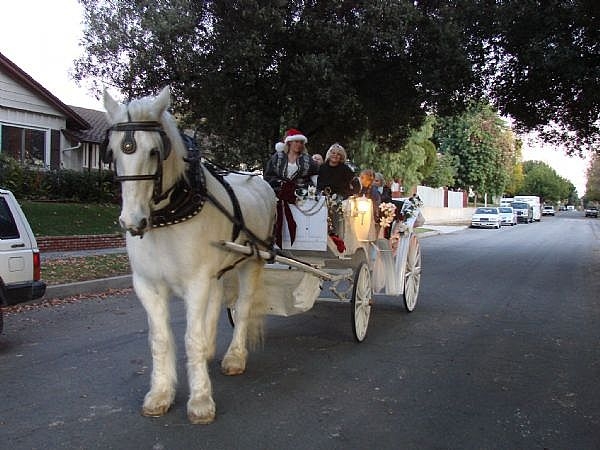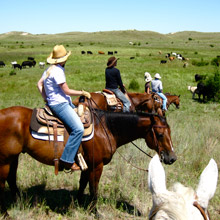Of all the tack and supplies necessary for handling a horse, horse lead ropes, in conjunction with a halter, have to be one of the most important. Horse leads allow the handler to control the animal in a manner that provides maximum safety for the animal and person, alike.
A halter is a device placed around the horse's head which applies pressure to certain areas in order to better control the animal's movements and actions. Through pressure points located on the nose, cheeks, and the area behind the ears, the halter allows the trainer to use only a minimal amount of strength, compared to the overall greater strength of the animal, to control the horse. Lead ropes are attached to the halter below the jaw of the horse and allow the trainer to keep in physical contact with the animal at a greater and safer distance. Should the horse startle or resist, you'd be able to retain some control.
While the halter, itself, is specifically designed to fit over the horse's head and encircle the specific areas needed to exert control, lead ropes are usually attached to the halter under the jaw of the horse. With the abundance of natural and man-made materials available today, horse leads come in leather, nylon, and cotton rope. Leads are available in lengths that range from 8 feet to 25 feet.
Knotted cotton rope halters and horse leads are the most economical and possibly the oldest version used. They are very popular due to the fact that there is no other hardware on them. Nylon poly horse lead ropes and halters are the strongest, have the added benefit of being the easiest to clean, and are quite economical. They also come in a wide variety of colors. Leather horse leads and halters are the most expensive of the lot and are generally reserved for use in competitions. It is generally believed that leather lead ropes and halters look more elegant than their nylon or cotton rope counterparts. There is also the danger that the leather could break in the event that the horse startles or resists.
There are two major advantages to the use of lead ropes. Although it is possible to lead a haltered horse using only your hands, attaching a horse lead is a far safer option. The horse can easily employ his greater strength to simply rip the halter out of the trainer's hands by simply jerking his head. When the halter is connected to a lead rope, the human hanging on to the other end of the horse lead could still control the animal.
The second advantage of lead ropes is that it provides a safe distance from which the trainer can control the actions of the horse. Should a horse startle or panic, it is possible to get out of the way of teeth or hooves, yet allow the trainer to maintain hold on the head, the only true place on the horse's body to accomplish proper control.
As you can see, the selection of horse lead ropes is an important step in the proper handling of your horse. With the availability of so many choices of material, it should be possible to find a style that best suits your needs and budget.

 How Much to Feed a Mini Horse?
How Much to Feed a Mini Horse?
How Muc
How Much to Feed a Mini Horse?
How Much to Feed a Mini Horse?
How Muc
 How to Harness a Horse
How to Harness a Horse
How to Harness
How to Harness a Horse
How to Harness a Horse
How to Harness
 How to Fatten Up a Skinny Horse
How to Fatten Up a Skinny Horse
How to
How to Fatten Up a Skinny Horse
How to Fatten Up a Skinny Horse
How to
 Reasons to Consider Horse Ranch Vacation For Your Next Adventure Trip
Experiencing a horse pack trip and enjoying the beauty of na
Reasons to Consider Horse Ranch Vacation For Your Next Adventure Trip
Experiencing a horse pack trip and enjoying the beauty of na
 How to Get Rid of Rain Rot on My Horse
How to Get Rid of Rain Rot on My Horse
How to Get Rid of Rain Rot on My Horse
How to Get Rid of Rain Rot on My Horse